The Israeli coastal city of Netanya might seem like an unlikely spot for hosting a mural created by an Iranian artist commemorating women killed by the Iranian regime.
But the city, alongside several more, is the proud home of the works of Hooman Khalili, who is dedicated to showcasing the ancient relationship between the Jews and the Persians and their common contemporary fight against the Iranian regime.
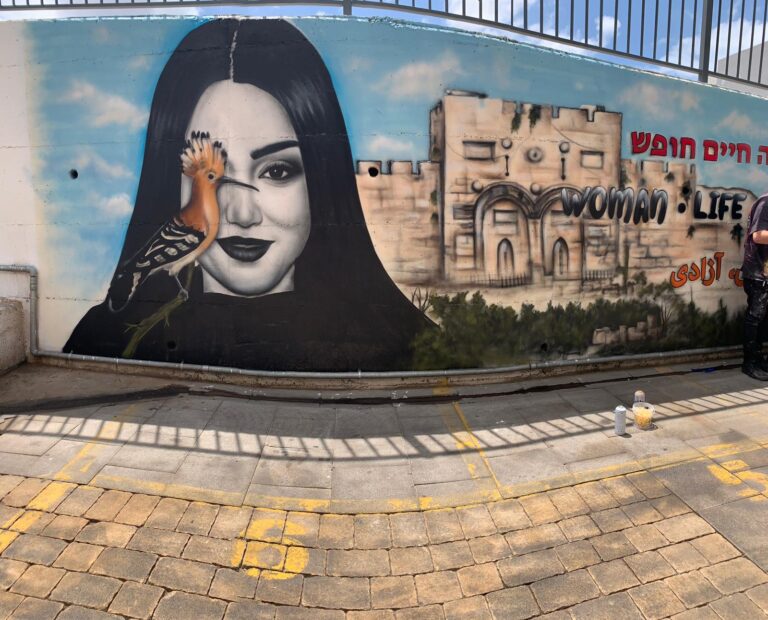
Born in Iran, Khalili escaped his home country at the age of four together with his mother in 1978, at the time of the Islamic Revolution. They came to the United States as illegal aliens and were adopted by the Presbyterian Church.
Khalili converted to Christianity, became a Sunday school teacher, choir director and a DJ on a San Francisco radio morning show.
Now the creative director of a group of hotels, and with a background in filmmaking, he was pushed to action after the killing of Mahsa Amini at the hands of Iran’s morality police in September 2022.
A decision was made to create a mural commemorating her, and the image went viral, reaching across the globe to Fleur Hassan-Nahoum, the deputy mayor of Jerusalem. She invited him over.
“The miracle is that 26 days after Fleur and I met in her office, the first mural went up in Jerusalem,” he tells ISRAEL21c. “My first mural in the Middle East was in the Talpiot neighborhood of Jerusalem.”
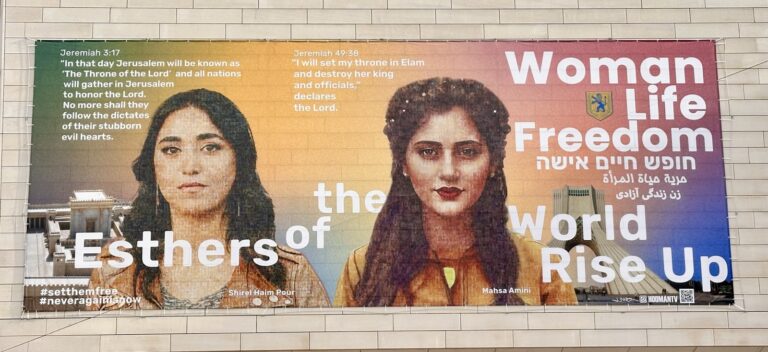
Commemorating women
There are now 10 murals in Israel, situated in Jerusalem, Nazareth, Haifa, Netanya and Tel Aviv. “I design all of them and work with Israeli artists who paint them,” Khalili explains.
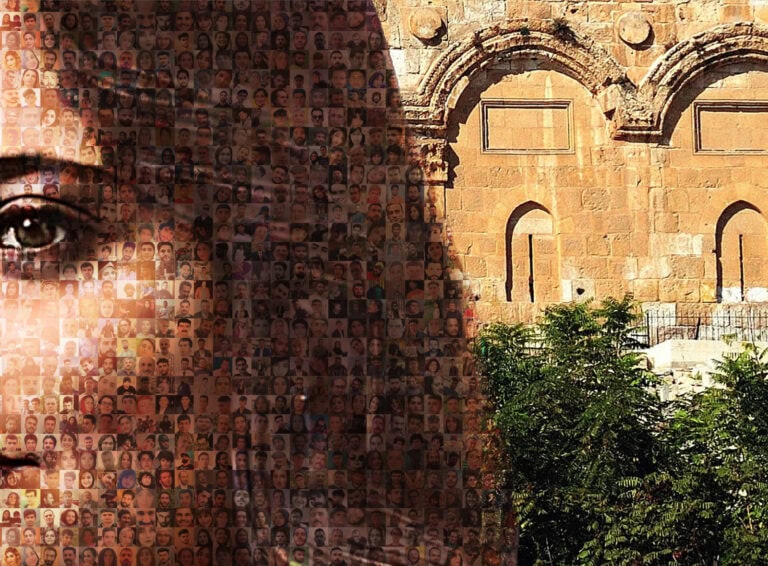
“The murals all depict women who have been murdered by the Islamic regime of Iran, and the last four feature Shirel Haim Pour, a Persian Jew killed by Hamas,” he notes.
Haim Pour, a 20-year-old IDF soldier of Iranian heritage, was killed on October 7 when Hamas terrorists captured her army base on the Gaza border.
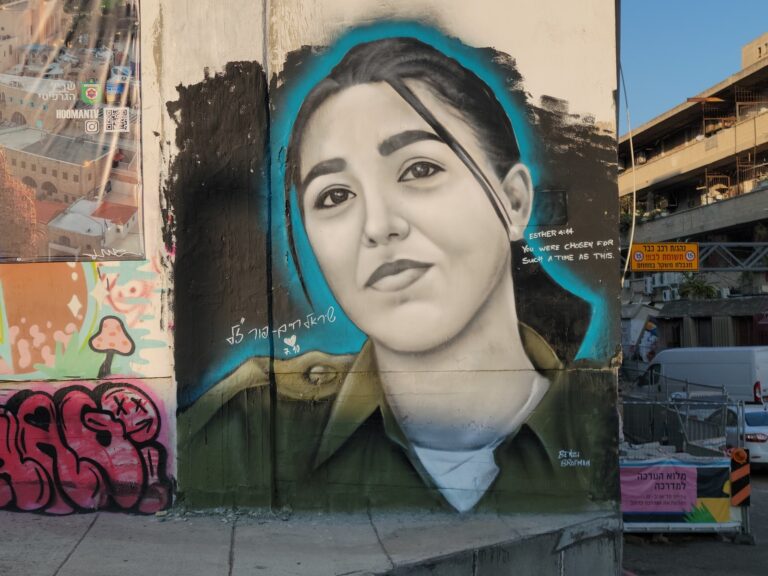
“Hamas is just one of the arms of the Islamic regime, so in my mind all of these women were murdered or maimed by the Islamic regime,” Khalili notes.
“The murals honor the women who have been murdered or maimed, reminding the world of the relationship between the Persians and the Jews,” he says, pointing out that “we’ve only been enemies for less than 50 years, but friends for 3,000 years,” and that biblical characters such as Queen Esther were Persian.
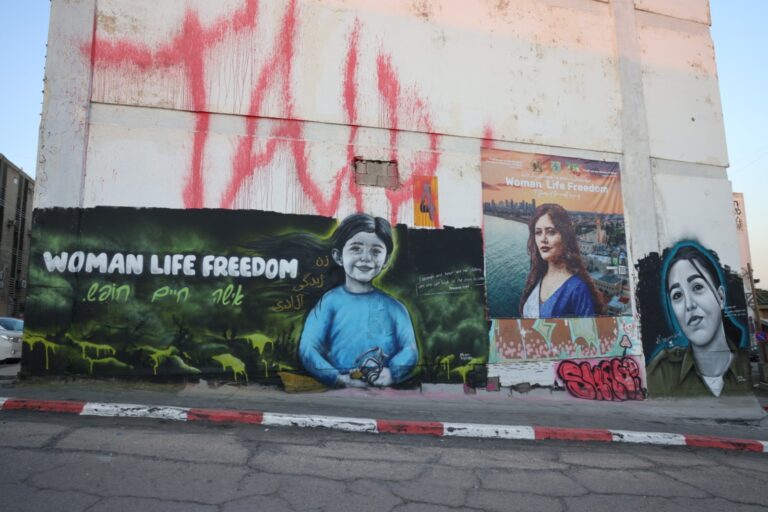
The murals also, he said, “show the world that Israel is the only country in the Middle East standing with the freedom-fighting women of Iran.”
He’s getting positive feedback from people in Iran, he adds.
A perfect picture
When Khalili’s first mural was unveiled on January 9, 2023, members of the international press covered the story.
“For one day, Israel got the best press in the entire world. I think back on that quite often,” Khalili says.
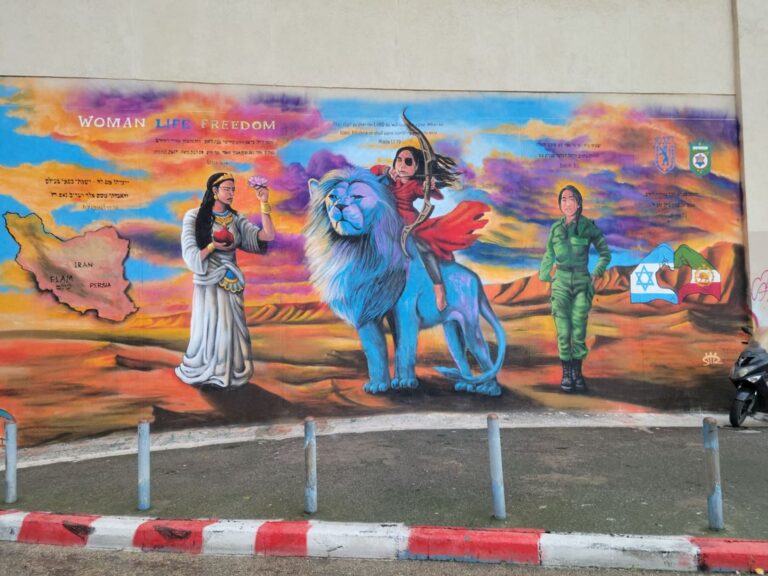
Israeli graffiti artist Benzi Brofman encouraged Khalili to place one of his murals in Nazareth, a predominantly Arab city.
“Me being a Persian Christian living in San Francsico, I have no knowledge of the city dynamics in Israel,” he recounts, so he walked around Nazareth for six hours, begging people for a wall.
Two “kind and agreeable” Muslim men eventually offered him a wall they jointly owned, sealing the deal with a handshake.
“So you have a mural that is painted by a Russian Jew, on a wall owned by two Muslim men, and it’s a mural designed by a Persian Christian – it’s a perfect picture.”
War didn’t stop him
After the October war broke out, Khalili’s work in Israel came to a halt, until in December he arrived in the country.
“I said, ‘I can’t let this war stop me.’ I jumped on a plane. I had no wall, just a design. I was alone, and I made sure I’ll be here for 10 days. For eight of these days, I sat in my hotel room and no one would coordinate with me,” he recalls.
“By the grace of God, the Red Sea parted, and the eighth mural went up, the most famous one, on the Museum of Tolerance, of Shirel and Mahsa side by side.”
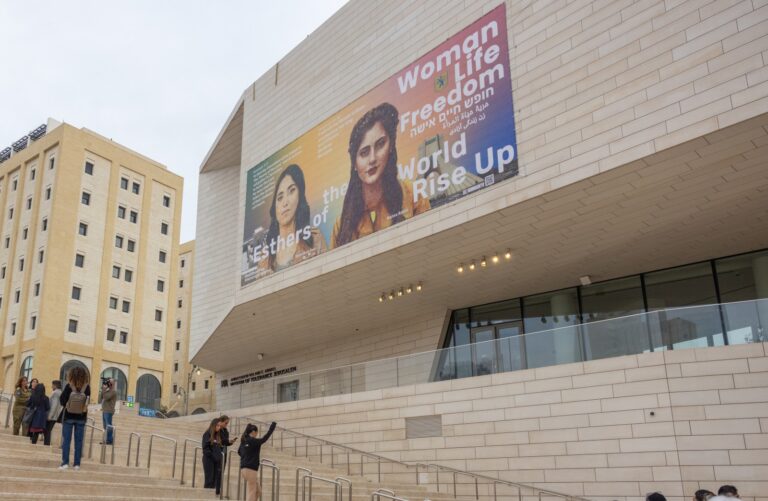
Khalili hopes that when people see the murals they will be impressed by the bravery of the women depicted and will understand that the relationship between the Persians and the Jews goes back to biblical times.
“And,” he adds, “I want the world to see that Israelis are the only ones standing with the freedom-fighting women in Iran.”
“If I put the same murals in Dallas, Texas, or somewhere in Vermont, no one would care. But I put them in the Holy Land, the land that everyone considers to be the most important place in the world – it’s like an atomic bomb. I can only do that in Israel.”






